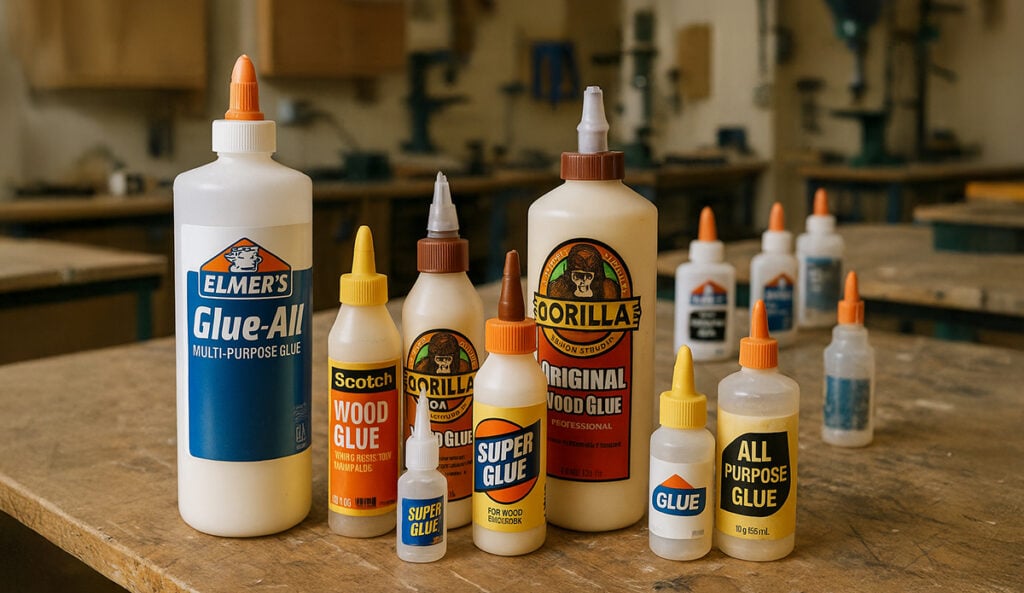Design and technology students often have to be familiar with a range of common glues and their uses. Students should understand how to prepare surfaces for gluing, as well as special application instructions, drying times, and safety precautions. This article summarises this material and concludes with sample examination questions from the Cambridge syllabus.

General recommendations before gluing two surfaces
- Clean and dry surfaces, ensuring free of dust, grease, or debris
- Consider roughening surfaces with sandpaper to improve adhesion (so they stick together better)
- Check glue is suitable for material (some glue reacts with or doesn’t stick to different materials)
- Consider clamping, weighting down, or taping together items using removable masking tape while they dry
- Work in a well-ventilated area, particularly with adhesives like epoxy resin or spray adhesives (or wear a suitable respirator)
- Wear gloves, particularly with glues like superglue, to avoid skin bonding or irritation
- Follow appropriate instructions for curing time
COMMON ADHESIVES
PVA
Guidelines
Uses
Wood, paper, cardboard, fabric, leather
Indoor uses where waterproofing isn’t required
Crafts, book-binding, school projects
Model-making
Wood glue
Guidelines
Uses
Furniture
General wood-working
All-purpose glue
Guidelines
Uses
Paper, card, wood, fabric, leather, light metals, and some plastics
Hot melt glue
Guidelines
Uses
Crafts
Quick repairs
Superglue
Guidelines
Uses
Models
Electronics
Metal, rubber, ceramic, glass, some plastics, some woods
PVC Solvent Cement
Guidelines
Uses
Joining PVC pipes
Polystyrene Cement
Guidelines
Uses
Plastic model kits
Spray Mount
Guidelines
Uses
Mounting artwork, posters, presentations or graphic designs onto lightweight materials like paper, card, foamboard, aluminium foil, or fabric
Epoxy Resin
Guidelines
Uses
Comes in 2 parts (a resin and a hardener) that are mixed together in a precise ratio
When mixed, chemical reaction creates bond
Super-strong – typically stronger than the bonded material
Sets in about an hour, full cure in 1 – 7 days
Waterproof
Messy to clean up
Expensive
Toxic fumes (need ventilation)
Fibreglass, boat building, structural repairs
Metal, glass, wood, concrete, stone, rigid plastics
Water features in architectural models
